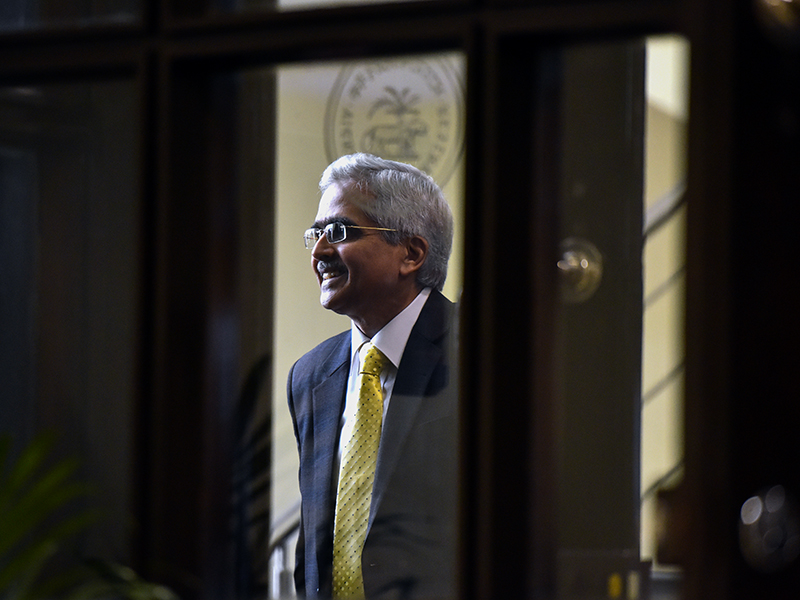RBI Moratorium Interest-waiver issue: A face-saver solution emerges finally. Here's an explainer
The prolonged uncertainty and confusion on the interest-waiver issue has come to an end with the Centre agreeing to compensate banks and the RBI notifying the scheme.
 Image: Sonu Mehta/Hindustan Times via Getty Images
Image: Sonu Mehta/Hindustan Times via Getty Images
The Reserve Bank of India (RBI) has asked all lending institutions to implement the government's scheme to grant ex-gratia payment of difference between compound interest and simple interest for six months to borrowers till August 31.
The RBI notification has come four days after the government first notified the details following a Supreme Court's interim directive.
What is the issue all about?
When COVID-19 struck the economy, the RBI, in March, announced loan moratorium to all term loans to help borrowers tide over the tough days. This wasn't a loan waiver but an EMI deferral scheme, which meant borrowers needed to pay back the deferred EMIs later. Banks duly implemented the EMI deferral scheme but said compound interest will be charged on the outstanding loan amount, thus adding to the repayment burden of the borrowers significantly at later stages of the loan cycle.
Compound interest refers to interest calculated on principal and the interest accumulated.
What is the scheme?
Following prolonged arguments in the Supreme Court (SC) with respect to banks charging interest on the moratorium loans, the government and the apex court finally reached a consensus that the issue can be settled by waiving the compound interest charged. The government's scheme essentially says that banks will credit the difference between simple interest and compound interest (from March 1 to August 31) in eligible borrower accounts. It is not yet clear whether this amount will be adjusted against the loan amount or will be credited to the borrower account separately. What is clear is that the central government will compensate banks. For this, they need to apply before a specified time.
Who are all eligible for this scheme?
All loans up to Rs 2 crore that are taken from banks, NBFCs (non-banking finance companies) and state co-operative banks are eligible. This include borrowers of housing finance companies and microfinance companies.
Which loans are eligible?
MSME, education, housing, consumer durables, credit card dues, automobile loans, personal loans and consumption loans.
But there is one condition. The loans, to be eligible for the scheme, shouldn't be a non-performing asset (NPA) as on February 29, 2020. It doesn't matter whether the borrower availed the moratorium for full six months, or partly availed (say for the first three months) or not availed at all.
Why for all?
The reason is simple. If the scheme was extended only for, say those who availed moratorium, it would be seen as partial treatment to those who continued to make the payments during this period.
Banks will have to calculate the amount to be credited based on the rate of interest prevailing as on February 29. This amount—the difference between compound interest and simple interest—needs to be credited to the borrowers' accounts on or before November 5, 2020.
Looks like an amicable solution
The RBI's concern that the banking system shouldn't penalised for charging interest on loans, for what was essentially an EMI deferral scheme, has been addressed. The SC observed that interest-on-interest amounts to penal action on the borrower. That part is also addressed, with the government, not banks, taking up the burden.
Banks get this amount back from the government. State Bank of India (SBI) has been mandated to collect the claims and make the payments. Banks need to set up grievance cells to settle any disputes on such claims.
What has happened now is a mutually agreed settlement between the Centre and the apex court, with respect to the interest-waiver issue — a last-minute face saver. The case, postponed multiple times, wouldn't have reached a practical solution in any other manner. The RBI had earlier informed the court that if banks are forced to waive the entire interest burden on moratorium, loans would cost banks around Rs 2 lakh crore.
This would have meant a massive financial hit on the industry. A fiscally constrained government would not have been in a position to take up this burden. On the other hand, the estimated burden on government on payment of compound interest will cost the exchequer only about Rs 7,500 crore.
With the government taking up the burden of compound interest payment and RBI notifying the scheme, the prolonged uncertainty over the interest waiver issue, which resulted in confusion among borrowers and banks, comes to an end.
Where does the burden go ultimately?
As an earlier Moneycontrol column pointed out, the buck stops at the taxpayer for what originally started as a COVID-relief exercise from the RBI. It means money will have to come from the pockets of the average taxpayers. Now, it has eventually become a taxpayer-funded interest-waiver exercise!
Original Source: https://www.moneycontrol.com/news/business/interest-waiver-issue-a-face-saver-solution-emerges-finally-heres-an-explainer-6021801.html